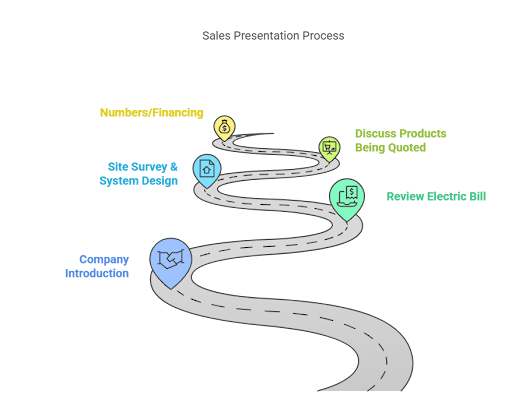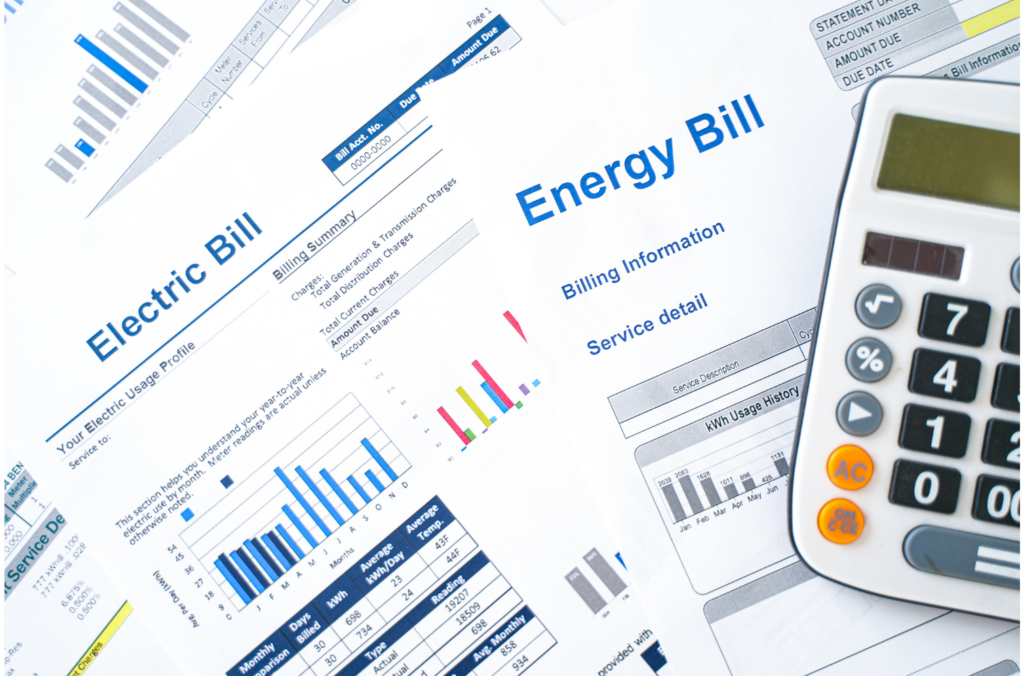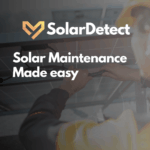
Raise your hand if you’ve been in the middle of your opening pitch and your customer says, “I’ve already gotten a lot of quotes so you can just skip ahead to the numbers”.
It’s a statement that frustrates almost every sales rep because your homeowner has turned off their brain and only wants to hear about your price, not the pitch and the value your company provides them. And why shouldn’t this homeowner shut down until the numbers? Most solar providers go through the same pitch and “value” statement, then hit the numbers.
Approaching your quotes in this fashion puts you behind the 8-ball, but we want to help with a few tips to make your solar quote stand out from the rest and show you’ve got more value than your competitors.
Table of Contents
Anatomy of a Solar Quote
In general, many solar quotes tend to follow the same path from start to finish:

Following the same path as your competitors bores your customers and makes getting solar quotes a chore for them. If you don’t happen to be the first quote they receive, your chances of them retaining anything other than your price can go right out the window.
So how do you stand out from the crowd no matter when your solar quote is received? It’s all about information presented and managing expectations.
The Introduction
Right off the bat, you need to hook in customers and let them know what you’re about to tell them will sound different than what they have already heard or read online. Before this conversation even happens, the “stand out” provider calls the lead first immediately upon their pipeline.
During this initial call, sales reps can take time to speak with prospective customers to deeply understand their situation, goals, challenges, and desired outcomes. Ask open-ended questions and let the customer talk – doing so will reveal a person’s true priorities and give you insight into what’s important to them. By understanding your customers before even pitching them a product, you’ve already begun to build a higher level of trust.
Once you get to the actual meeting, you’ve already built rapport and can frame the conversation to explore options that will solve the specific issues you identified in your first conversation. Align yourself as someone here to educate on options to solve their problems and be on the same side of the table as them. You’re not here to push a product and get out the door as fast as possible; you’re here to lead them to your shared goal – going solar with you.
Pro Tips:
- Ask insightful questions to understand the customer’s perspective
- Collectively establish clear goals for the project
- Emphasize long-term success metrics
Promoting Your Company
A quick refresher on who you are, who your company is, and the kind of work you do is important for any meeting. If they’ve gotten several quotes, it can be confusing to keep all the websites and marketing material straight. Give them some quick background on your experience with the company, how long the company has been in business, and your history of operating in their area.
One great way to show the quality of your work is to point out any installations in their area a person could drive by and see. If your prospect can see what an installation of yours looks like with their own eyes rather than a picture you show them, it makes a world of difference.
If your company is diversified and works in multiple areas like residential, commercial, industrial, HVAC, roofing, etc., highlight those as an indication of your health and stable business model.
Pro Tips:
- Emphasize your ability to tailor solutions to customer needs
- Shift their mindset of you from pushing a product to someone offering solutions
The Utility Bill

Reviewing a customer’s utility bill is a vital step in the solar pitch. This gives you a chance to clearly define the problem and identify the issue that needs to be solved. Put special consideration into this portion, framing the problems on their utility bill in a way you both agree on so the homeowner is willing to collaborate with you on a solution.
The stand-out provider will highlight not only the annual consumption and costs, but also take time to educate on what parts of the bill can be reduced, what effect metering policies will have, variations in rates, and rate escalation. Rate escalation is a massive misinformation spot in quotes, so use this link to look up your state’s historical rate escalation values.
Not every homeowner is looking to go solar purely for savings on their electric bill. Taking time to discuss the bill and the market conditions affecting it can reveal what they truly want. Maybe they really want energy storage for resiliency but aren’t able to articulate that because they didn’t know it was an option.
What you’re looking for in this part of the pitch is to make sure the solutions you offer fit the customer’s needs. If the customer doesn’t feel the issues posed during the bill review are real and impactful to them, the solutions you offer may not be a fit for them. A great way to build trust and credibility is to be willing to walk away if a solution isn’t the right fit for both parties.
Pro Tips:
- Clearly define and agree upon the problems your project will address
- Evaluate whether your solutions genuinely fit the customer’s needs
Site Survey and System Design
The site survey and system design you made for this homeowner is a great place to establish trust and have an open and honest conversation. In a perfect world, all houses would have a southern-facing roof with perfect sun exposure and no shade. Unfortunately, we don’t live in a perfect world.
If your system design has to utilize multiple roof planes and is impacted by shade, it can be challenging for the customer to wrap their head around. Especially if the proposed system won’t cover 100% of their energy needs. This is your chance to be genuine and honest and educate the customer. Utilize LIDAR or other methods of shade analysis to show the customer your design considers many factors. Ask the client if the site conditions have changed since your aerial photo was taken and adjust accordingly.
If selling ownership like cash and financing, the stand-out provider will only utilize the most efficient roof planes and be able to show the customer the value of using those over non-optimal roof planes, like north-facing. If you’re selling a TPO product, you should be able to explain why you use more space to get the most power out of the system, regardless of efficiency.
In terms of system design, make sure to review the design before meeting with the homeowner. Too many times a design is auto-generated and shows panels on areas that aren’t roofs at all or have panels hanging over the edge. Familiarize yourself with fire setbacks and create a realistic design. A realistic design that fits on the roof builds way more credibility than the competitor claiming they can fit way more modules and then changing the layout at installation.
Pro Tips
- Have open, transparent discussions and welcome objections
- Highlight how the offered solution will achieve the shared goal
- Provide value with a realistic approach
Talking Products
Depending on the trainer you talk to, some people may recommend not talking about the panels, inverter, or battery being used. The stand-out provider though will utilize this portion of the conversation to be open and transparent.
The products you offer can add the value you provide to a customer. By highlighting the products you use, the warranties they offer, and the company’s history or success, you can implant credibility in your service. Look at Sunpower as an example; for years they positioned their product as the best the industry had to offer and customers would actively seek out that equipment. Highlighting the values the equipment brings, helps you stand out from the competition who may not even mention what equipment a customer is getting.
Warranty should be a key part of this discussion. Solar is a long-term relationship and highlighting enhanced warranty offerings sets you apart from the competition. Equipment with enhanced warranties is a great start, but offering long-term, independent warranties like SI-30 Total and SI-30 Solar from Solar Insure show top-tier levels of value.
With the protection provided by SI-30 Total and SI-30 Solar, homeowners get an industry-leading 30 years of parts AND labor coverage for their system. The independent warranty provides peace of mind against surprise repair costs and protects against companies going out of business.
Pro Tips:
- Help the customer make an informed decision by presenting options with clear values
- Establish what long-term success looks like and how your solution helps them get there
The Numbers
The meat and potatoes of every sales pitch. If your customer has received a few quotes they’re likely looking forward to this conversation the most. But if you’ve properly utilized the pro tips shared before this, your prospective customer already has a vision of the value you’re offering and how they will achieve success.
The numbers are another section where you can focus on fit, making sure that the financing or purchase options you show get the customer to the goals you’ve both established. Homeowners like to have options so they can choose what seems best to them. If you only offer one option, they’ll feel like you are choosing for them and psychology shows that people like to have options.
If you’ve properly done all the steps leading up to this, you can guide the decision process by offering a select number of options and showing how those achieve the customer’s goals. This isn’t the time for high-pressure sales tactics; don’t try to advance the sale without a clear commitment from both sides to move forward and agreeance on the value and fit.
Pro Tips:
- Show options with clear value propositions aligned to the customer’s goals
- Avoid high-pressure, pushy sales tactics
- Get agreement on the value and fit before moving the sale forward
What Else Stand-Outs Discuss

The above steps are all the “standard” solar sales pitch, but if you want to be a stand-out solar provider, there are a few other areas to cover as part of the conversation. Firstly, acknowledge that this is only the first step on the road to solar. Make sure to cover all the steps and give clear, realistic expectations of the next steps and timeline to complete them. Nothing will kill credibility than telling a customer “We typically complete these in 90-120 days” and then the system isn’t installed for six months.
At the end of your sales pitch, you can collaborate with the customer on key milestones and communication needs. Doing so will build proper expectations and define your intended results. If someone else in your organization will be taking over communication, clearly define who that person is and in what scenarios you will be involved to assist. You can use these follow-ups as an opportunity to strengthen your relationship and identify other needs they may have. Maybe they didn’t want a battery at first but after doing some research decided on adding one. By following up regularly, you can keep that business in-house.
Service is also an area stand-outs won’t shy away from. One of the biggest mistakes the solar industry has made is adopting the phrases “there’s no moving parts” and “it’s set it and forget it”. In some cases, solar equipment works without interruption, but in most cases, service will be needed at some point in the next 30 years.
By not shying away from this conversation, you build more trust with your customers by being realistic about future needs and potentially future costs. Convention would tell us not to put the idea of extra cost in a customer’s head, but use this as an opportunity to leave landmines for competitors. If you offer customers high-quality warranties like SI-30 Total or SI-30 Solar, you can use this as a cherry-on-top approach to hammer home the value added by your solutions.
Be a Trusted Advisor
Becoming a trusted advisor isn’t easy at first, it requires thoughtful consideration at every step in the solar installation process. It requires you to change your mindset from “we want to win everything” to a mindset where you want to win the right things. Achieving this helps your customers, and reputation, and sets up your business for long-term success.
By following the above guide and taking a same-side approach to your customers, solar providers can position themselves as trusted advisors and problem solvers, fostering long-term relationships and loyalty.



